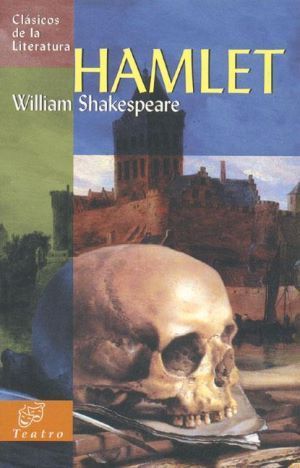William Shakespeare’s Hamlet recounts the internal struggle of prince Hamlet as he plans to murder his uncle Claudius. Hamlet, while teetering between sanity and madness, experiences an apparent personal growth throughout the course of the tragedy. The analysis of Hamlet’s dialogue with Horatio, Hamlet’s best friend and sole confidant, best exemplifies the radical change in Hamlet’s character. Horatio facilitates Hamlet’s personal growth because Hamlet is rational while in Horatio’s presence. Hamlet’s interactions with Horatio illustrate Hamlet’s transformation from an indecisive, embittered teen to a confident young prince.
In the first act of Shakespeare’s tragedy, Hamlet sulks and mourns over his father’s death. King Hamlet, however, died over two months before the beginning of the play. The entire royal family has gotten over the loss of their King except for Hamlet. By dwelling in the past, Hamlet shows his initial hesitance. He is not confident with himself or his own efforts. When Hamlet recounts his plan to reveal Polonius’s guilt to Horatio, he praises Horatio for possessing traits that he does not have, “Give me that man/ That is not passion’s slave, and I will wear him/ In my heart’s core, ay, in my heart of heart,/ As I do thee,” (III.ii.76-79). Hamlet loves Horatio for his self-control and reserve and Horatio uses these traits in order to judge Polonius’s guilt. Thus, Hamlet’s plan cannot succeed without Horatio’s help. Early in the play, Hamlet is dependant and weak. However, Hamlet’s experiences eventually lead him to decisiveness.
Hamlet develops a confident, Machiavellian attitude throughout the course of the play. In Act II, Hamlet shows that he is hesitant and merciful. When he has the chance to murder Polonius while he prayed, Hamlet does not capitalize on this opportunity. He simply waits. But Hamlet undergoes his personal transformation and shows the decisive, Machiavellian attitudes of a leader. Hamlet recounts to Horatio how he left Rosencrantz and Guildenstern to die, but Hamlet is not guilty of his actions, “They are not near my conscience. Their defeat/ Does by their own insinuation grow./’Tis dangerous when the baser nature comes/ Between the pass and fell incensèd points/ Of mighty opposites,” (V.ii.65-69). Hamlet declares that the deaths of Rosencrantz and Guildenstern were necessary for Hamlet’s personal interest. Hamlet considers his two former friends to be stepping stones on the path of his greater goal: to kill Polonius.
In the final scene of Shakespeare’s tragedy, Hamlet shows his independence. At first, Hamlet depends on the help of Horatio to discover the guilt of Polonius. He relies on King Hamlet’s ghost to remind him to concentrate on his revenge. However, in one of Hamlet’s last dialogues with Horatio, the reader sees Hamlet’s independence. Hamlet ignores Horatio’s advice and decides to proceed with his fencing match with Laertes, “Not a whit. We defy augury. There is a/ special providence in the fall of a sparrow. If it be/ now, ’tis no to come; if it be not to come, it will be/ if it be not now, yet it will come. The/ readiness is all. Since no man of aught he leaves/ knows, what is ‘t to leave betimes? Let be,” (V.ii.233-238). Hamlet’s defiance illustrates his personal growth because he is finally able to concentrate on his revenge. Not only does Hamlet defy Horatio, but he also relinquishes all self-doubt by accepting fate. Hamlet declares, “I fit be/ now, ’tis no to come; if it be not to come, it will be,” saying that his life is in the hands of God. If he is meant to kill Polonius, God will allow him to. This final act not only shows Hamlet’s decisiveness, but also shows his wisdom.
Hamlet’s dialogue with Horatio shows his personal growth throughout the play. Hamlet eventually develops independence and decisiveness, and Hamlet’s experiences with Horatio help Hamlet manifest these traits.
Source:
Edwards, Phillip, ed. 1985. Hamlet, Prince of Denmark. New Cambridge Shakespeare ser. Cambridge: Cambridge University Press. ISBN 0521293669.


